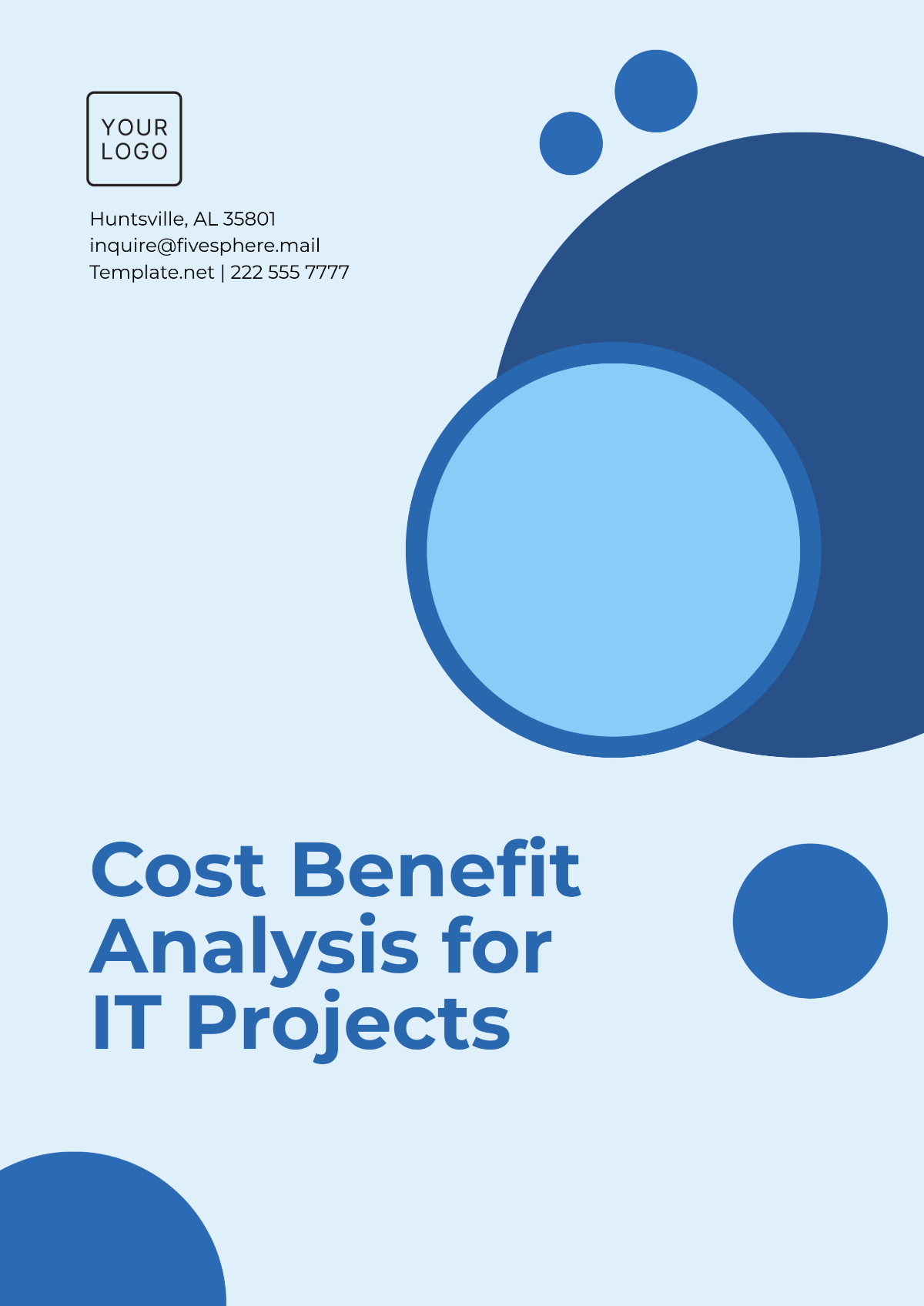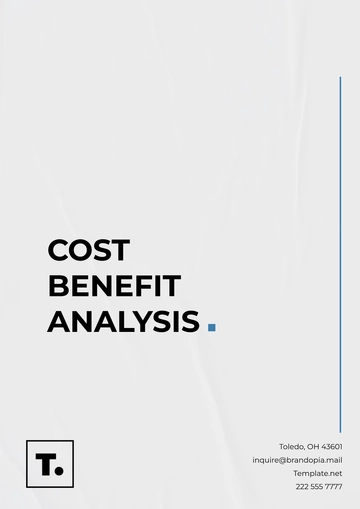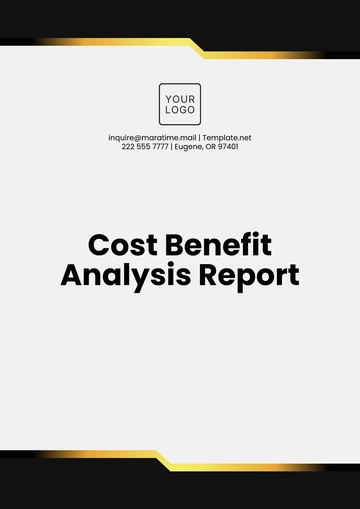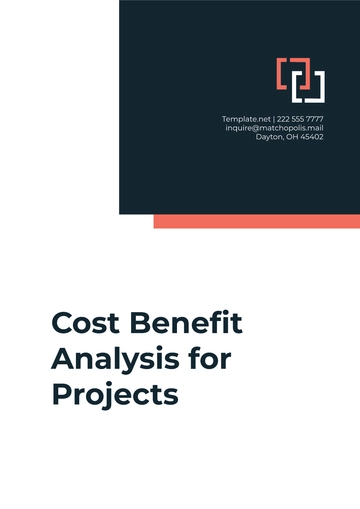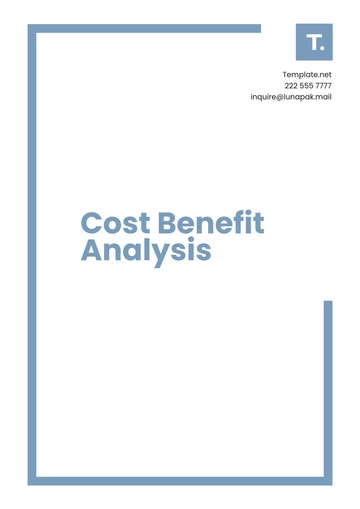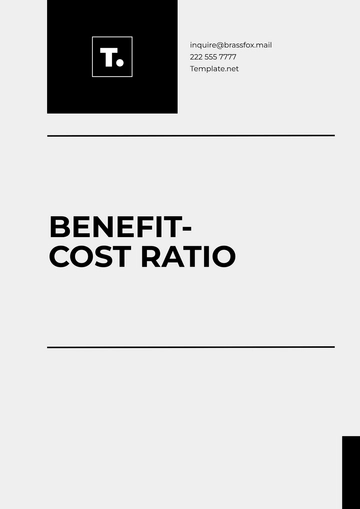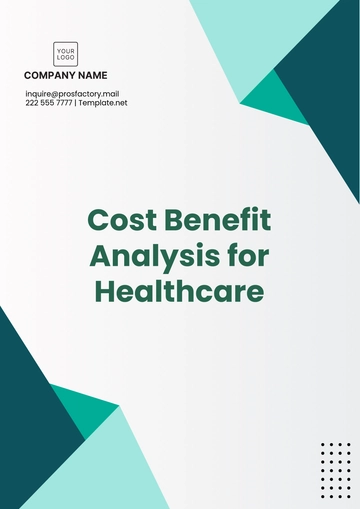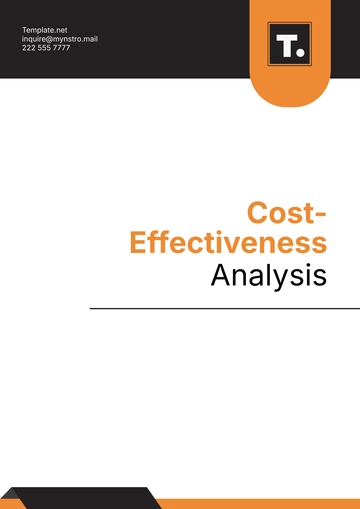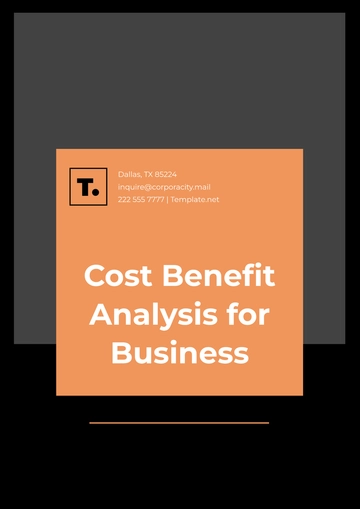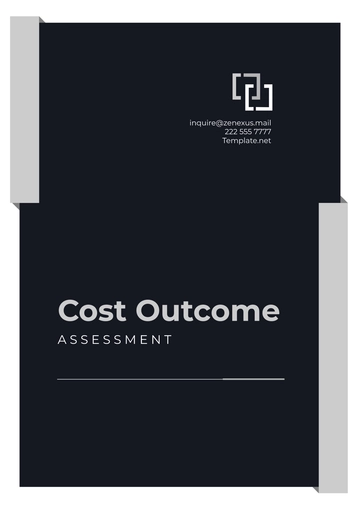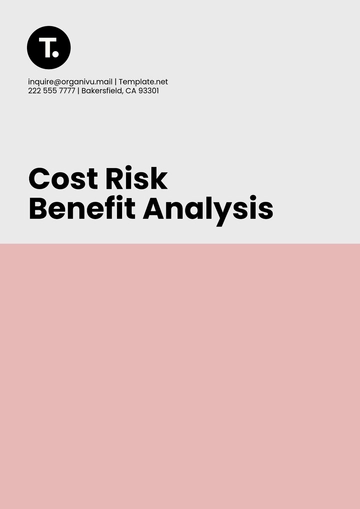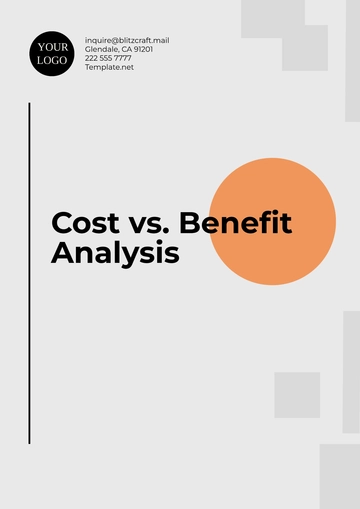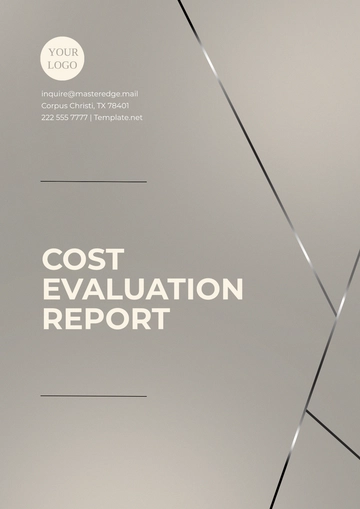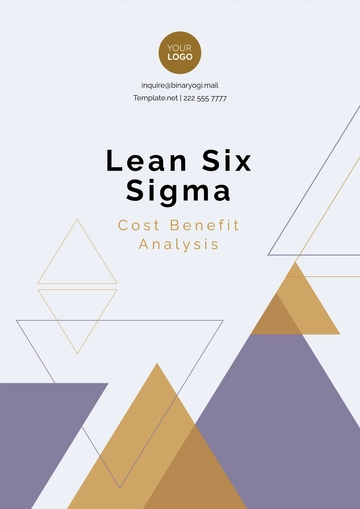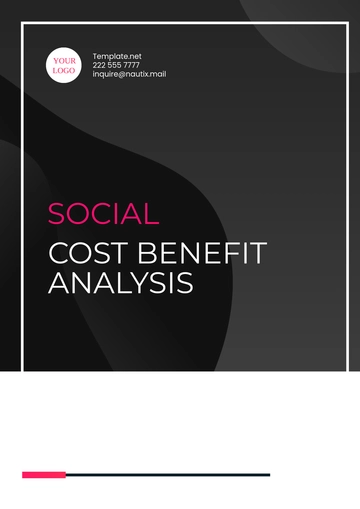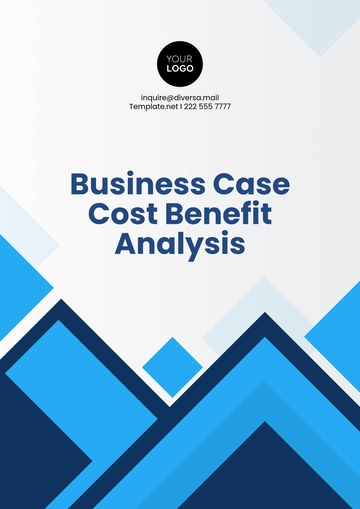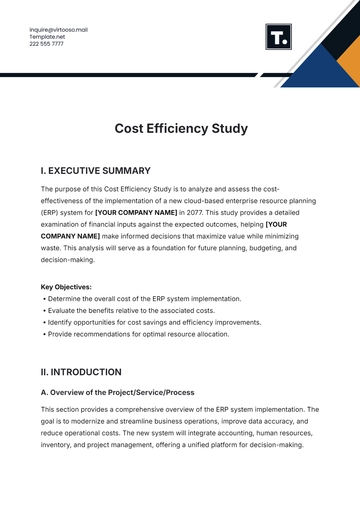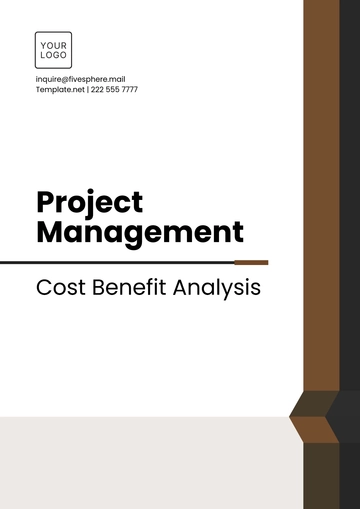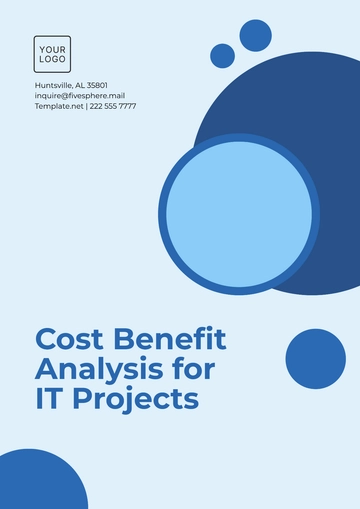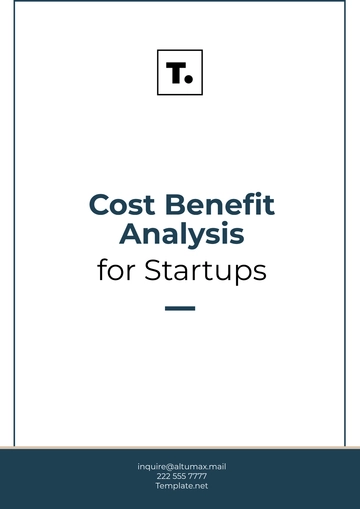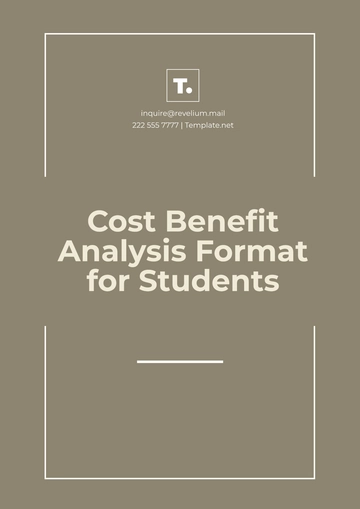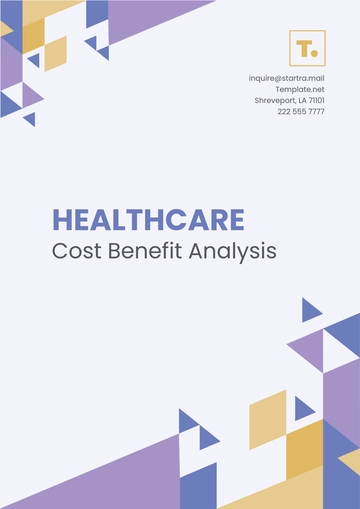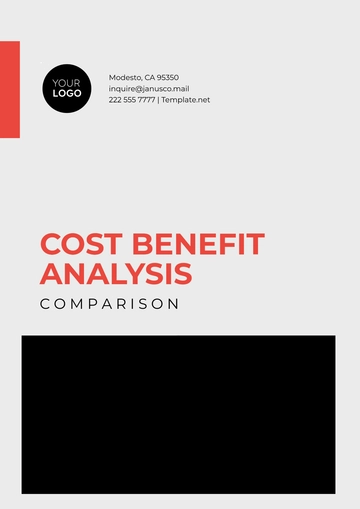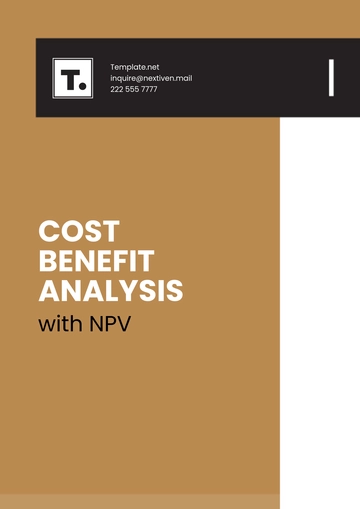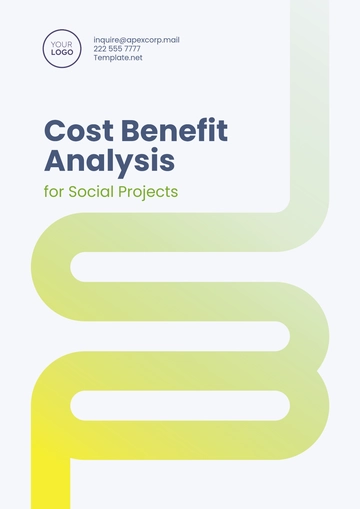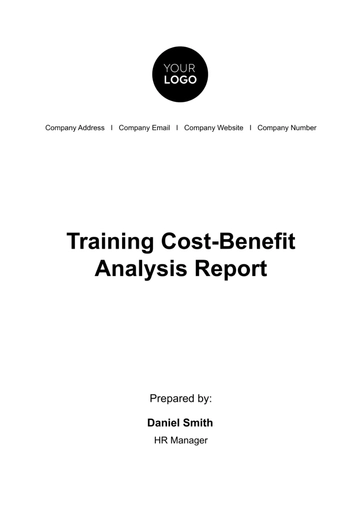Cost Benefit Analysis for IT Projects
I. Executive Summary
Purpose
The purpose of this Cost-Benefit Analysis (CBA) is to evaluate the financial and strategic implications of the Cloud-Based Customer Relationship Management (CRM) System for [YOUR COMPANY NAME]. This analysis aims to determine whether the benefits of the project outweigh its costs and to assess the return on investment (ROI).
Summary of Findings
Total Estimated Costs: $1,200,000
Total Estimated Benefits: $2,000,000
Net Present Value (NPV): $800,000
Payback Period: 2.5 years
Recommendation: Proceed with the project
II. Project Overview
Project Objectives
Implement a cloud-based CRM system to improve customer engagement.
Streamline internal processes and data management for better decision-making.
Enhance data security and backup capabilities.
Project Scope
In Scope:
Cloud infrastructure setup
CRM software installation and configuration
Employee training and onboarding
Data migration and system testing
Out of Scope:
Key Assumptions
The cloud infrastructure provider will offer consistent uptime and performance.
Employee training will be completed within two months of system deployment.
The project will be completed within a 6-month timeline.
III. Cost Analysis
Direct Costs
Hardware: $150,000 (for cloud servers and backup solutions)
Software: $500,000 (for CRM software license and annual subscription)
Licensing Fees: $50,000 (for third-party integrations and APIs)
Infrastructure Upgrades: $100,000 (for network bandwidth and cloud storage expansion)
Indirect Costs
Training: $50,000 (employee training sessions and materials)
Change Management: $25,000 (consultation and management of employee transition)
Lost Productivity During Transition: $75,000 (estimated productivity loss during the first two months of implementation)
Total Costs
IV. Benefit Analysis
Tangible Benefits
Cost Savings: $600,000 (reduction in operational costs from automation and streamlining processes)
Increased Revenue: $800,000 (additional sales generated from improved customer engagement and insights)
Operational Efficiency Gains: $200,000 (improvement in internal workflows and data management)
Intangible Benefits
Improved Customer Experience: Enhanced ability to track and engage customers in real-time.
Enhanced Data Security: Stronger encryption and backup processes in place, reducing the risk of data loss.
Increased Employee Satisfaction: Improved user interface and easier access to customer information, leading to better productivity.
V. Financial Metrics
Return on Investment (ROI)
Formula: ROI=Total Benefits−Total Costs/Total Costs×100%
Calculation: ROI=2,000,000−1,200,000/1,200,000×100%=66.67%
Net Present Value (NPV)
Formula: NPV=∑Benefit−Cost/(1+r)t
Assuming a discount rate of 10% and the project benefits occurring over 5 years,
Calculation: NPV = $800,000 (NPV result after applying the discount rate)
Payback Period
Formula: Payback Period=Initial Investment/Annual Net Benefit
Calculation: Payback Period = $1,200,000 ÷ $480,000 (Annual net benefit) = 2.5 years
VI. Risk Analysis
Identified Risks
Data Migration Challenges: Potential data corruption or loss during the migration process.
Vendor Reliability: Risks associated with cloud service provider downtime or service degradation.
Employee Resistance to Change: Some employees may struggle with adopting new technologies.
Mitigation Strategies
Data Migration Testing: Implement thorough testing and validation to ensure successful data transfer.
Vendor SLA Monitoring: Choose a cloud provider with a strong Service Level Agreement (SLA) and performance guarantees.
Employee Engagement: Offer continuous training and support to ensure smooth adoption of the new system.
VII. Conclusion and Recommendations
Conclusion
Based on the analysis, the Cloud-Based CRM System project:
Recommendations
Proceed with the project as it offers significant long-term benefits with a relatively short payback period of 2.5 years.
Suggested next steps: Finalize vendor contracts, initiate project planning, and prepare the internal team for system rollout.
VIII. Appendices
Appendix A: Detailed Cost Breakdown
Appendix B: Detailed Benefit Calculations
Appendix C: Risk Assessment Matrix
Analysis Templates @ Template.net
